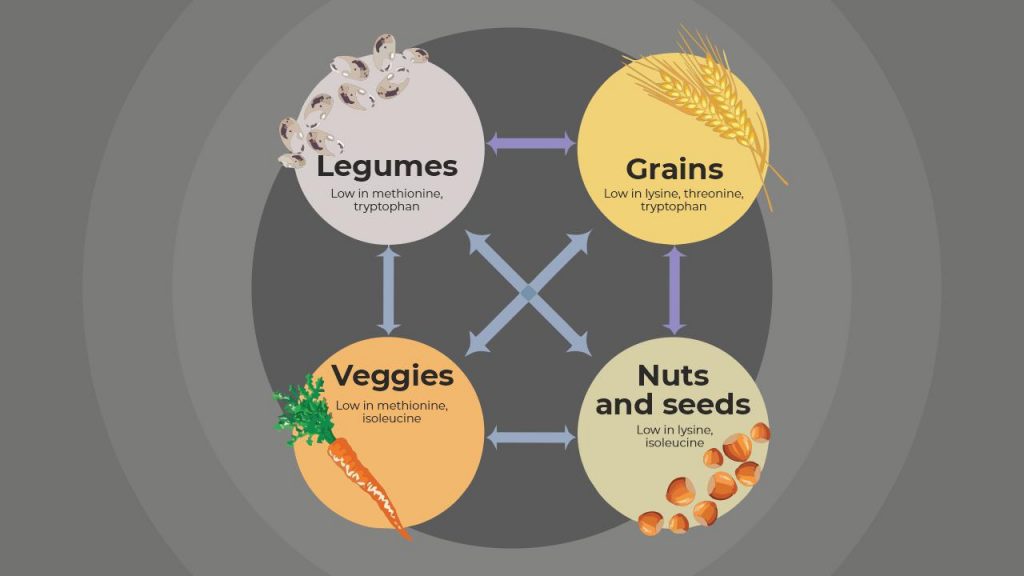
Quality Protein: A Guide for Vegetarians and Vegans

Protein is one of the three macronutrients that are vital for sustenance. Vegan and vegetarian diets often receive flak for being low in protein. But, are they really? If you follow these diets, you need to be simply mindful about combining certain protein sources together, so you get enough quality protein. Let’s find out about proteins for vegetarians and vegans, and how they can make the most out of them.
Units of proteins
Proteins are made up of building blocks called amino acids, which are of three kinds — essential, non-essential, and conditionally essential.
1. Essential amino acids are those that your body cannot produce, so you need to get through your diet
2. Non-essential amino acids can be produced by your body
3. Conditionally essential amino acids are only required during specific situations, such as when your body is undergoing some form of stress or illness
Now, why are we speaking about amino acids? It’s because your body needs a good supply of essential amino acids on a daily basis from the food you eat, and you should know where to find it.
Also read: Protein: Everything You Need to Know
Identifying quality protein sources
Based on the availability of essential amino acids, protein-rich food is divided into two categories — first-class and second-class. The names refer to the quality of protein they contain.
First-class proteins: First-class proteins or complete proteins come from animal sources, such as eggs, meat, fish, poultry, as well as dairy products. They contain all the essential amino acids that your body needs. They are more “bioavailable”, which means that your body can digest and absorb them quite efficiently.
Second-class proteins: Non-animal sources such as grains, pulses, legumes, nuts, and oilseeds, which do not contain all essential amino acids, are called second-class proteins. They are less “bioavailable”, since the body is unable to digest and absorb them as efficiently as first-class proteins. So vegans and vegetarians need to ensure that they get a sufficient supply of quality protein by combining foods that supply all essential amino acids.
Also watch: High-protein ‘Sattu Chaas’ recipe for summers
How can you get quality protein?
If your chief source of protein is second-class, then it’s necessary to attain the right combination of such foods through mutual supplementation. So, a food lacking in one or two essential amino acids would have to be eaten along with another food that contains them.
A perfect example is a serving of brown rice (30g) and cooked pulses or dal (15g), which provides 5.9g of protein. Brown rice is “limiting” or has a lesser quantity of a particular amino acid that is compensated by pulses and vice versa. Both these foods, when eaten together, ensure that you get a supply of all essential amino acids.

Similarly, you can combine grains like whole wheat, millets, and quinoa with high-protein vegetables such as drumstick leaves, agathi leaves, and fresh peas to ensure a supply of complete protein. Include a variety of vegetables in your diet and combine starchy vegetables like potatoes, peas, and corn with other veggies instead of simply having one kind.
Some other combinations are:
1. One tablespoon peanut butter with one slice of whole-wheat/ multigrain bread provides 7.5g protein (legume+grain combination)
2. Spinach and bean salad, which contains 50g spinach and 30g kidney beans, gives 7.04g protein (vegetable+legume combination)
3. 1 cup lentil soup (30g of lentil) with 5g of chopped almonds, provides 8g protein (pulses +nuts combination)
You need not eat all these combinations in a single meal. So, you can look at spacing them out across meals every day.
Our body has a circulating bank of amino acids, which are obtained either from the digestion of dietary proteins or as a by-product when protein is broken down in your body. So, there’s constant production and breaking down of proteins to add to this vast amino acid pool to meet the body’s requirement of amino acids.
Daily protein needs
According to the National Institute of Nutrition, India, a sedentary adult who primarily consumes a cereal-based diet, the protein requirements are 1g/kg body weight per day. For instance, if you weigh 60kg, you need to eat 60g of protein every day (1×60). This can be split across four meals a day. So, your intake per meal would ideally be around 0.25g protein/kg body weight.
It is important to note that you might need to eat more protein if you are into physically intensive activities such as weight-lifting, sprinting, or swimming. Your protein needs can then range anywhere from 1.2g to 2.2g/kg of body weight per day to make up for the muscle wear and tear that your body undergoes.
Understanding the right techniques to combine protein-rich foods will enable you to get the right quantity and quality of proteins in your everyday diet and allow you to live a stress-free and optimal life.
References
1. Whitney E, Rolfes SR. Understanding Nutrition. Boston, MA: Cengage Learning, 2016.
2. Woolf PJ, Fu LL, Basu A. Protein: Identifying Optimal Amino Acid Complements from Plant-Based Foods. PLoS One 2011; 6: e18836.
3. Hoffman JR, Falvo MJ. Protein – Which is Best? J Sports Sci Med 2004; 3: 118–30.
4. Young VR, Pellet PL. Plant proteins in relation to human protein and amino acid nutrition. Am J Clin Nutr 1994; 59: 1203S–12S.
5. Optimal Protein Intake Guide. Examine.com. 2021; updated on Feb 19. https://examine.com/guides/protein-intake/#optimal-daily-protein-intake-for-athletes (accessed on Mar 10, 2021).













